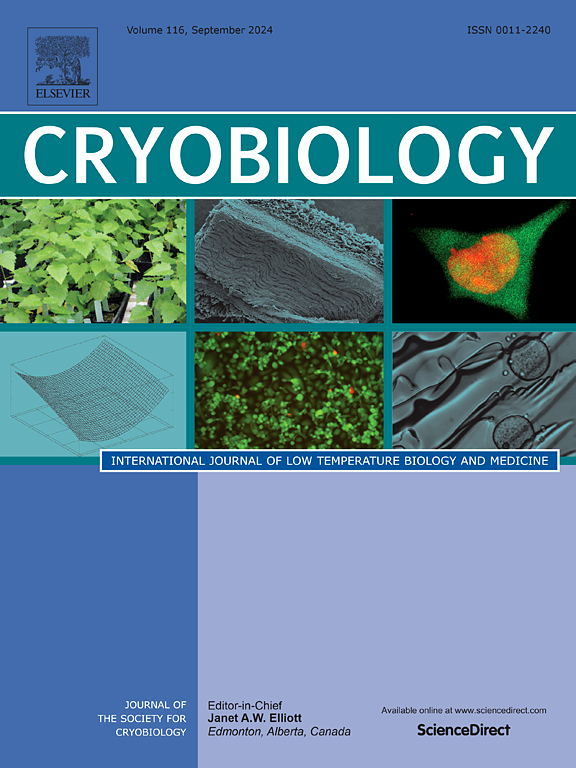超低温保存下濒危珍稀物种埃文牛角蒿的长期存活
IF 2.3
3区 生物学
Q2 BIOLOGY
引用次数: 0
摘要
低温保存已被证明是一种可行的替代方法,长期储存的特殊物种,不能种子库。虽然它在植物保护方面的应用在世界范围内越来越受欢迎,但它的新颖性导致了关于物种在冷冻储存中长期(5年)存活的文献的缺乏。本研究对联邦濒危特殊植物Crotalaria avonensis的茎尖在3-16年的低温储存中,通过三种不同的封装玻璃化方法的存活率进行了评估。此外,最近开发的液滴玻璃化方法与包封玻璃化方法进行了短期生存比较。总体而言,超过92%的基因型在长期冷冻保存后存活,液滴玻璃化方法似乎比原始的包封玻璃化方法提高了存活率。此外,长期生存数据验证了先前发表的指导意见,即液氮暴露后40%的初始存活率将导致长期储存后95%的存活率,而avonensis中39%的初始存活率导致每个基因型长期储存后95%的存活率。短期液氮暴露后的初始存活期似乎是长期存活期的一个指标,这可以给从业者一些他们银行成功的指示。本研究有助于文献展示低温保存作为濒危和/或野生特殊物种的长期储存方法的潜力和成功。本文章由计算机程序翻译,如有差异,请以英文原文为准。
Long-term survival after cryopreservation of the endangered exceptional species Crotalaria avonensis
Cryopreservation has been shown to be a viable alternative method of long-term storage for exceptional species which cannot be seed banked. While its use is gaining in popularity worldwide for plant conservation, its novelty translates into a dearth of literature on the long-term (>5 year) survival of species in cryo-storage. This study presents an assessment of survival across three variations on the encapsulation vitrification method for 3–16 years of cryostorage for shoot tips of the federally endangered exceptional plant species, Crotalaria avonensis. In addition, the more recently-developed droplet vitrification method was compared to encapsulation vitrification for short-term survival. Overall, over 92 % of banked genotypes survived after long-term cryo-storage, and the droplet vitrification method appears to improve survival over the original encapsulation vitrification procedures. In addition, the long-term survival data validate the previously published guidance that a 40 % initial survival after liquid nitrogen exposure will lead to a 95 % chance of survival after long-term storage, with 39 % initial survival in C. avonensis leading to a 95 % probability of survival after long-term storage per genotype. Initial survival after short-term liquid nitrogen exposure appears to be an indicator of long-term survival in storage, which can give practitioners some indication of their banking success. This study contributes to the literature showing the potential and success of using cryopreservation as a long-term banking method for threatened and/or wild exceptional species.
求助全文
通过发布文献求助,成功后即可免费获取论文全文。
去求助
来源期刊

Cryobiology
生物-生理学
CiteScore
5.40
自引率
7.40%
发文量
71
审稿时长
56 days
期刊介绍:
Cryobiology: International Journal of Low Temperature Biology and Medicine publishes research articles on all aspects of low temperature biology and medicine.
Research Areas include:
• Cryoprotective additives and their pharmacological actions
• Cryosurgery
• Freeze-drying
• Freezing
• Frost hardiness in plants
• Hibernation
• Hypothermia
• Medical applications of reduced temperature
• Perfusion of organs
• All pertinent methodologies
Cryobiology is the official journal of the Society for Cryobiology.
 求助内容:
求助内容: 应助结果提醒方式:
应助结果提醒方式:


